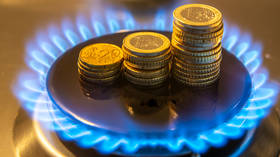
Energy markets have been reacting to labor strikes in Australia that could disrupt global LNG supplies

© Getty Images / urbazon
Natural gas futures in the European Union experienced a substantial increase – by as much as 18% – on Tuesday, according to data from the London Intercontinental Exchange (ICE).
The cost of gas futures for July delivery at the TTF hub in the Netherlands surged to an intraday high of nearly €47.6 ($52.1) per megawatt-hour in household terms, or $539.7 per thousand cubic meters.
Analysts attribute the surge to a projected rise in temperatures that will inevitably trigger an increased demand for cooling. Moreover, Australian supplies are increasingly at risk of interruption, as labor strikes are expected to hit three major gas facilities operated by Chevron and Woodside Energy. Potential walkouts could affect as much as 10% of global exports of liquified natural gas (LNG).
Though EU buyers rarely purchase Australian natural gas, the region would need to compete with Asian consumers for replacement cargoes.

“Preliminary talks between the unions and the LNG projects’ shareholders did not result in any breakthroughs,” Leo Kabouche, an LNG analyst at Energy Aspects in London told Bloomberg. “A full resolution is unlikely to be reached without the full support of the Offshore Alliance, and recent social media posts from the union indicate that we are still some way away from this.”
While the EU’s gas inventories are well-above the seasonal norm, the region remains vulnerable to potential delays in the summer maintenance schedules of major producers, such as Norway.
EU gas prices had been steadily declining since August 2022. The reduction in costs were related to full storage inventories and stable supplies of LNG. In addition, the region managed to get through the winter because of relatively warm weather. As of June 13, EU storage facilities were reportedly 72.8% full.
For more stories on economy & finance visit RT’s business section




